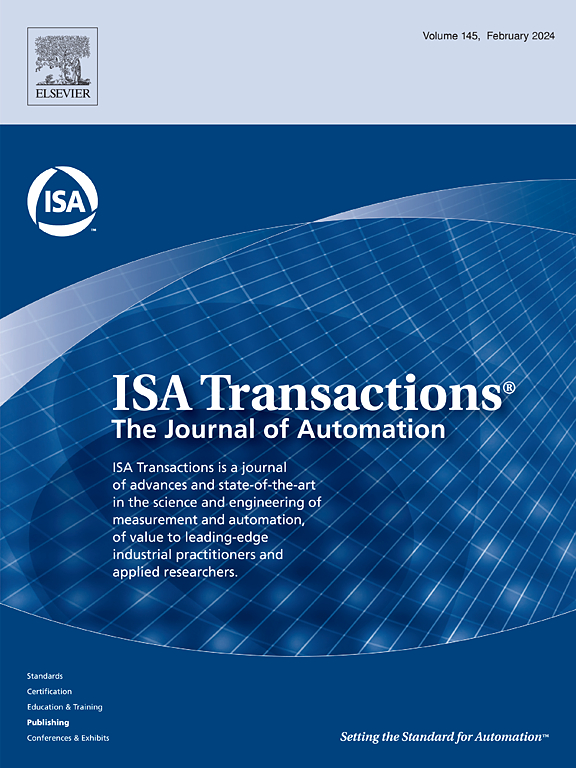Direct torque control of a dual star induction generator based on a modified space vector PWM under fault conditions
IF 6.3
2区 计算机科学
Q1 AUTOMATION & CONTROL SYSTEMS
引用次数: 0
Abstract
Recent studies have shown that electrical systems in wind power conversion are subject to a 67 % failure rate, and conventional three-phase generators are considered to be the most sensitive to these faults. Induction generator current harmonics are a major source of torque ripples causing acoustic noise and vibrations. These ripples can progressively increase under faulty operating conditions. In six-phase machines, there is appearance of high harmonic currents in the air gap as space harmonics. Power electronic converters are also subject to faults, the most common being Short-Circuit (SC) and Open-Circuit (OC) faults. SC faults cause large peaks in the line currents, which trigger the protection devices, resulting in a complete shutdown of the production system. OC faults, on the other hand, cause imbalances in the phases, but the system remains in operation.
Direct Torque Control (DTC) based on Space Vector Modulation (SVM) at constant switching frequency is an effective solution to tackle induction generator current harmonics. This paper proposes a DTC combined with a Proportional Integral Fuzzy Logic Controller (PIFLC) optimized by Particle Swarm Optimization (PSO) in order to overcome the problems of torque ripples. Furthermore, using Vector Space Decomposition (VSD) and the Modified Space Vector Pulse Width Modulation (MSVPWM) strategy, a significant reduction of harmonics in the air-gap can be achieved.
Simulations were carried out under MATLAB/Simulink, and the results obtained demonstrate the superiority of the proposed DTC-PIFLC-PSO controller in terms of robustness against wind speed variations and under faulty switch conditions in the power converter of the Dual Star Induction Generator (DSIG) generator. In addition, a comparative study with the classical PI controller is presented to show the effectiveness of the DTC-PIFLC-PSO controller against faults with a significant reduction in the Total Harmonic Distortion (THD) during both faulty and non-faulty conditions.
故障条件下基于改进的空间矢量 PWM 的双星感应发电机直接转矩控制。
最近的研究表明,风能转换中电气系统的故障率高达 67%,而传统的三相发电机被认为对这些故障最为敏感。感应发电机电流谐波是造成声噪和振动的扭矩纹波的主要来源。在故障运行条件下,这些纹波会逐渐增大。在六相电机中,气隙中会出现高次谐波电流,即空间谐波。电力电子变流器也会出现故障,最常见的是短路(SC)和开路(OC)故障。SC 故障会导致线路电流出现较大峰值,从而触发保护装置,导致生产系统完全停机。而 OC 故障则会导致相位不平衡,但系统仍可继续运行。基于空间矢量调制(SVM)的恒定开关频率直接转矩控制(DTC)是解决感应发电机电流谐波的有效方案。本文提出了一种结合比例积分模糊逻辑控制器 (PIFLC) 的 DTC,该控制器通过粒子群优化 (PSO) 进行了优化,以克服转矩纹波问题。此外,利用矢量空间分解(VSD)和修正空间矢量脉宽调制(MSVPWM)策略,可显著减少气隙中的谐波。仿真在 MATLAB/Simulink 下进行,所得结果表明,所提出的 DTC-PIFLC-PSO 控制器在风速变化和双星感应发电机 (DSIG) 发电机功率转换器故障开关条件下的鲁棒性方面具有优势。此外,与传统 PI 控制器的比较研究表明,DTC-PIFLC-PSO 控制器在故障和非故障条件下都能显著降低总谐波失真 (THD),从而有效抵御故障。
本文章由计算机程序翻译,如有差异,请以英文原文为准。
求助全文
约1分钟内获得全文
求助全文
来源期刊

ISA transactions
工程技术-工程:综合
CiteScore
11.70
自引率
12.30%
发文量
824
审稿时长
4.4 months
期刊介绍:
ISA Transactions serves as a platform for showcasing advancements in measurement and automation, catering to both industrial practitioners and applied researchers. It covers a wide array of topics within measurement, including sensors, signal processing, data analysis, and fault detection, supported by techniques such as artificial intelligence and communication systems. Automation topics encompass control strategies, modelling, system reliability, and maintenance, alongside optimization and human-machine interaction. The journal targets research and development professionals in control systems, process instrumentation, and automation from academia and industry.
 求助内容:
求助内容: 应助结果提醒方式:
应助结果提醒方式:


